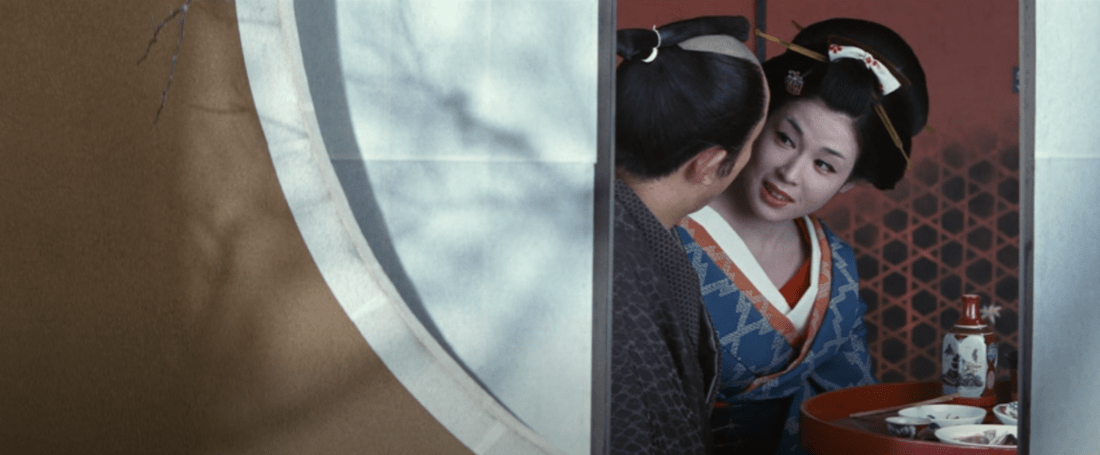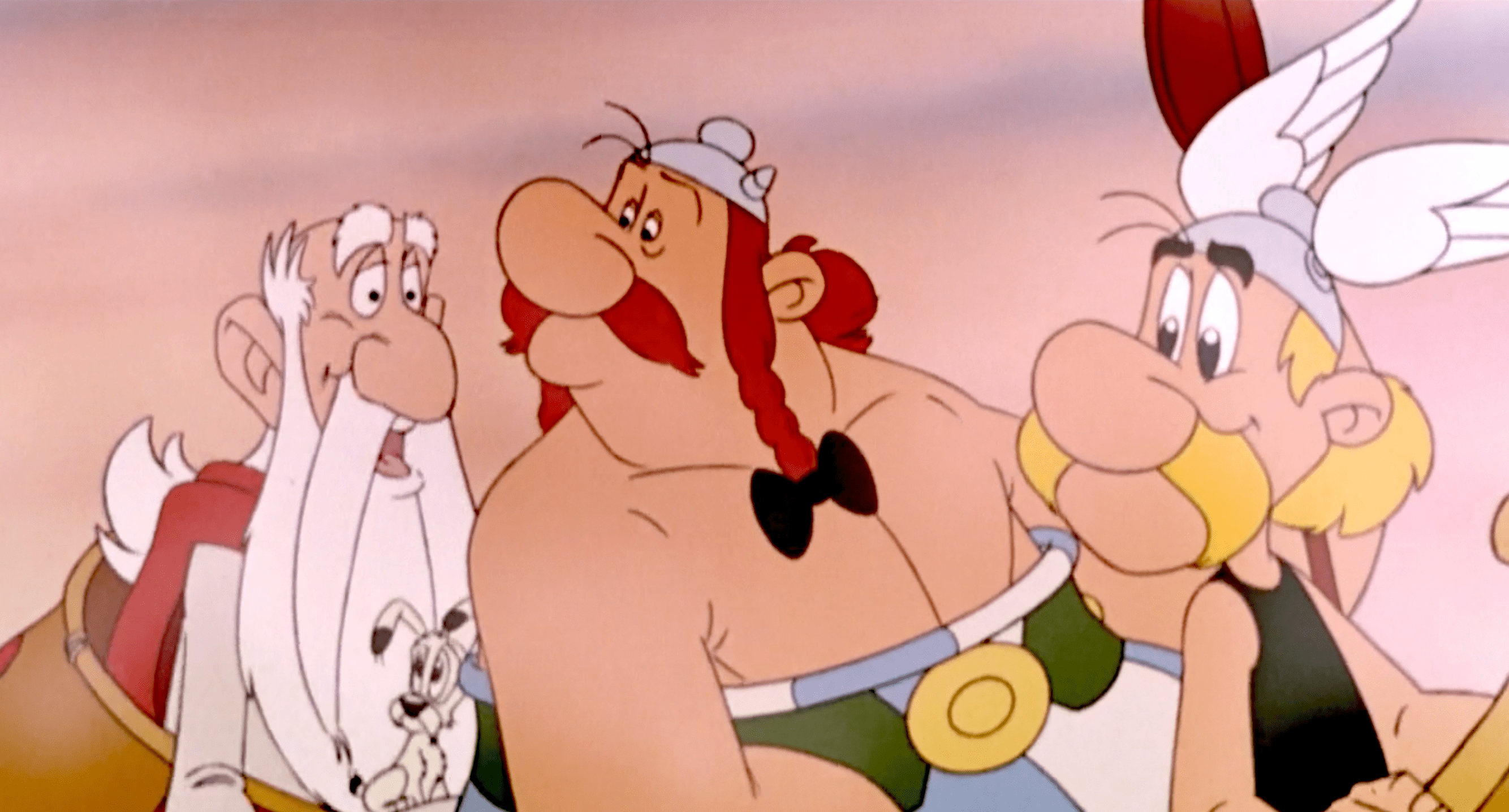
Despite its appearance Irezumi is not a chanbara (swordplay) film. It shares many of the trappings of the genre, but it is far more brutal than films like Sword of Doom or Yojimbo. It has elements of American noir but it goes further than the majority of that genre as well. As soon as you witness the first murder you know this movie is not screwing around.
As much as I love chanbara I’ve always felt that more often than not the fight choreography is poor. The swords never seem to truly connect and people fall over dead after one swipe across their back. A notable exception would be the Lone Wolf and Cub series which indulges in fountains of blood but is more cartoonish than violent. Don’t get me wrong I love all these films but when you press play to watch Irezumi you think you’re going to chanbara-land and you end up somewhere very different.
The ingredients are the same. A beautiful Geisha is a vortex for a swirly storm of lust, obsession, betrayal, and murder. There is always a troubled femme-fatal Geisha trying earnestly to leave her profession behind and there is always an obsessive client who is trying to pay for her freedom. There are countless Japanese movies that use this premise. An otherwise honorable man destroys his life and reputation trying to run off with his geisha-love but is beset by thugs from the underworld, and/or corrupt officials and rich nobles who want the geisha for themselves either for lust or profit.
In Irezumi we have Shinsuke the shop apprentice who is deeply in love with Otsuya the geisha. She in turn seems to love him back and together they want to elope. Of course, all the plans run awry and Shinsuke ends up with a lot of blood on his hands, both literally and figuratively.

Shinsuke ís a thoroughly unlikeable character. He lacks foresight, he is a coward, he has no integrity, and is prone to panicked fits of frustrated violence. He is easily manipulated by Otsuya who may genuinely love him or may simply see him as her way out, or perhaps both. Her character has more depth than Shinsuke and is hard to pin down.
The wild card in the mix is the tattoo on Otsuya’s back. It is of a demonic spider with a woman’s head. It was placed there against her will as a means of branding her but it seems to be dragging her into increasingly depraved behavior. The tattoo can be seen as something supernatural that is driving her mad or it can be seen as the inciting event that causes her to give up hoping for a good life and so plunges her into depravity.
Magical or not the tattoo has the same effect. A life as an honorable wife has been stripped from her. Now all she has left is an ever-changing series of half-baked schemes to find a way out of prostitution. She is the only female character in the film. The lustful and greedy men that surround her are all vile but each one has the potential to save her from her fate. It doesn’t matter who they are as long as they throw her some kind of lifeline.
Otsuya is played with a kind of blunt realism that is rare in this genre. She lacks all the rarefied grace and delicacy of a geisha. She huffs and flops and pushes things around giving her character depth beyond a sex object.
She has many nude scenes but we never see her breasts or private parts, only the ominous tattoo. Typically chanbara throw in a few prurient peeks of nipples and butts to titillate the audience, but here Otsuya’s psychology takes precedence over ogling her body.
The murders that we witness are what really set the film apart. Not only are they more realistic in their choreography but we watch the characters suffer and struggle and cover each other in blood. These are brutal encounters that do not end with a majestic last breath but with desperate screaming and gritted teeth. It gives the entire film a kind of seriousness and palpable urgency that Sanjuro or Zatoichi just do not have. If we were to watch Zatoichi twist a blade in someone’s stomach while blood slowly oozed out over the sword hilt and onto his hands it would be a different kind of film. It would be more difficult to see Zatoichi as a hero.

There is definitely no hero in Irezumi. No one comes close to being redeemable. In chanbara or in American westerns there is usually the lone, morally grey but still heroic protagonist, who walks off into the sunset in the end. It’s a sad ending but with a ray of hope. Irezumi is dark from beginning to end and provides us only with unstable, desperate, and cruel people.

Set against all this darkness and cruelty is the beautiful cinematography. Director Masumura chose a wide aspect ratio allowing him to use all the different planes so common in Japanese architecture. The straight lines, the sliding shoji screens, and the rumpled piles of kimono fabric fit into tight angular compositions that keep the characters trapped in uncomfortable spaces.
Yasuzô Masumura made Irezumi in 1966. He would go on to make films that leaned further toward sexploitation and sensationalism like Hanzo The Razor and Blind Beast which have their own merit, but Irezumi stands out as an unusually serious and dire depiction of crime and anguish.




